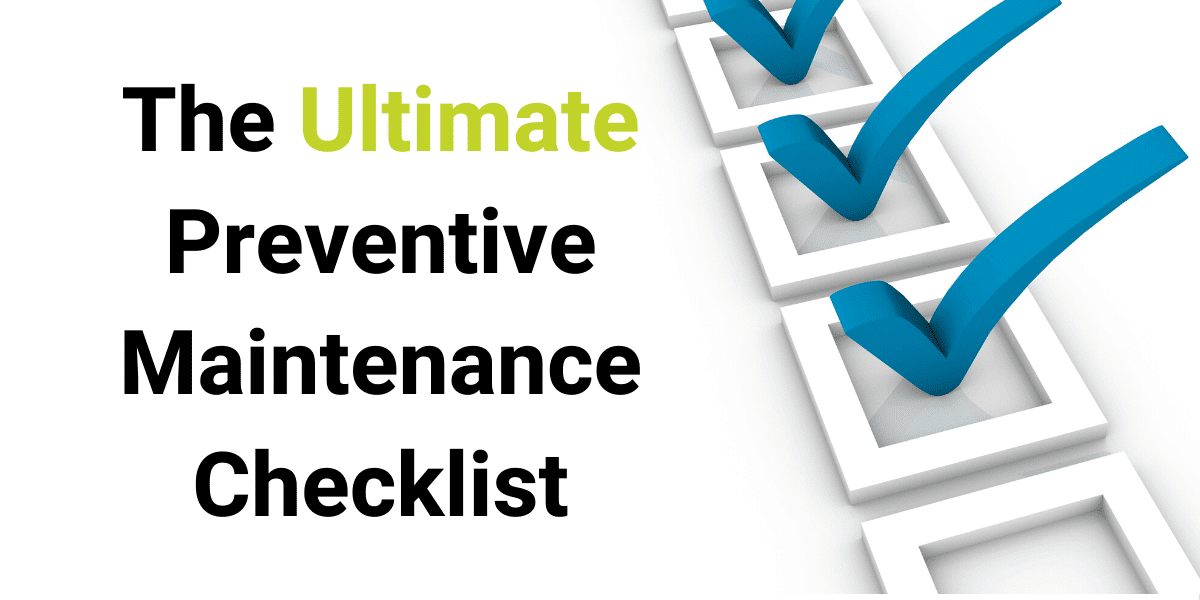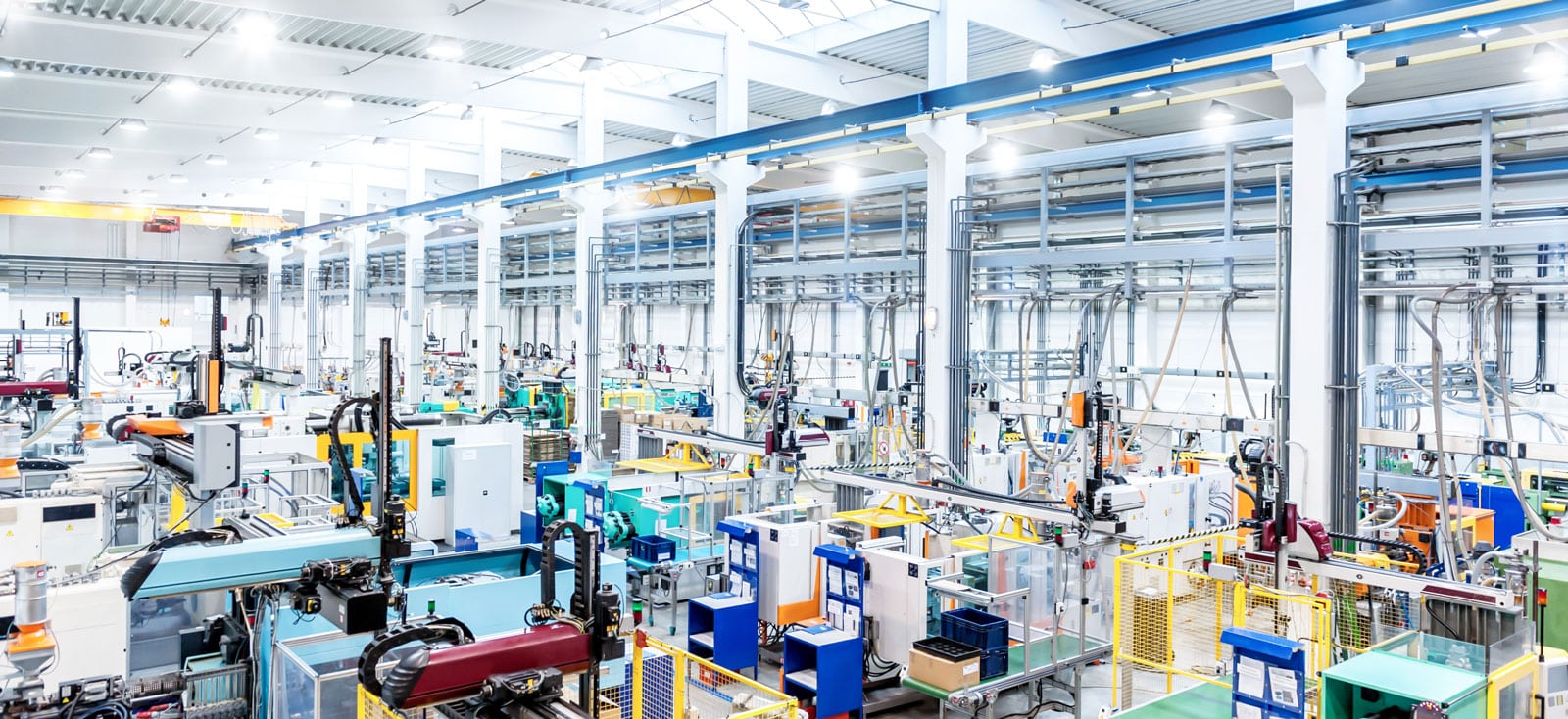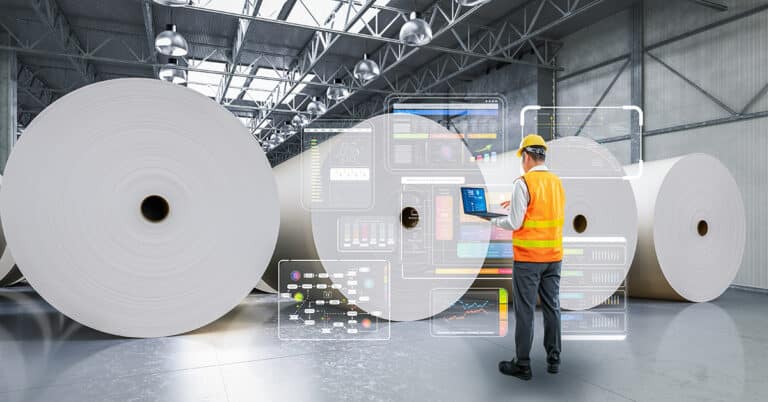Enacting a preventive maintenance plan can yield great benefits — improved equipment operation, increased part quality and lower overall downtime to name a few. However, realizing these benefits does require an investment of time and effort to create and implement the plan.
Your preventive maintenance plan should be tailored to your facility, but there are many foundational elements common across the board. The easiest way to carry out these preventive maintenance tasks is often in the form of a technician checklist. We’ve put a sample template together below so you can begin building a preventive maintenance checklist of your own.

View the full infographic here.
The preventive maintenance pre-check
Before you begin, take a look at these pre-maintenance steps that that should be core to any industrial preventative maintenance checklist:
- Assess and inventory the current state of your facility: Set benchmarks based on current performance for efficiency, quality, uptime, maintenance and more — and be sure you understand every aspect of your facility that will undergo preventive maintenance activity.
- Locate documentation: For machinery, much preventive maintenance can be done in accordance with manufacturer recommendations and specs according to the manufacturing documentation.
- Create documentation of your own: A facility’s machine maintenance management checklist is a good start and quick reference, but be sure to comprehensively document your preventive maintenance plan and processes in a place where all employees can easily access and review it.
With these initial steps completed, you’re ready to start building a preventive maintenance checklist. Feel free to use the checklist guide below as a starting point.
The ultimate preventive maintenance checklist
Preventive maintenance for machines
- Ensure that machinery is clear of debris, before and after every shift
- Wipe machine surfaces of lubricant, dirt and other loose debris each day
- Regularly inspect tools for sharpness
- Check for and replace worn or damaged tools
- Routinely check all machinery fluid levels and air filters and replace as needed
- Calibrate machines regularly
- Replace filters as recommended by the manufacturer to maintain optimum performance and prevent clogging
- Check and adjust the alignment of components such as pulleys, gears and shafts to prevent excessive wear, vibration and premature failure
- Inspect hoses and connections for leaks or wear
- Inspect wiring, connections and insulation for signs of wear or damage
- Ensure air compressors and pneumatic tools are properly maintained and check for leaks.
- Test emergency stop functions, guards and safety interlocks
- Inspect and tighten nuts and bolts
- Regularly back up software configurations and settings
Preventive maintenance for material handling equipment
- Regularly check belts for damage
- Review calibration and programming for gantry machines, this is often a good opportunity to identify inefficiencies
- Clean belts and other equipment in direct contact with materials and inventory at least once a day
- Check and maintain motors and other power sources at least twice a year
- Check the electrical connections, cables and wires for any signs of damage or loose connections
- Test the safety features such as emergency stop buttons and warning lights
- Ensure that safety features such as horns, lights and backup alarms are functioning
- Regularly inspect pulleys and bearings for wear and proper tension
- Check cables, hooks and lifting mechanisms for signs of wear and damage
Preventive maintenance for facility infrastructure
- Ensure that adequate space exists between machinery
- Confirm that safety and caution areas are sufficiently marked
- Keep walkways and other means of ingress and egress clear of debris and any other material
- Guarantee that wires are properly secured and do not present a hazard
- Check stairway and walkway railings regularly
- Inspect structural building elements at least once a year — structural damage can further harm your capital investments and your inventory, creating exponential losses
- Comprehensively check and repair building systems (electrical, plumbing, network) at least once a year
- Examine fire detectors twice a year and remain in compliance with local regulations
- Assess external grounds, including parking facilities, for hazards
- Check your roof at least once a year
- Perform lighting maintenance, such as replacing bulbs, cleaning fixtures and replacing faulty ballasts, etc
- Conduct HVAC system maintenance, such as regularly cleaning or replacing air filters and inspecting and cleaning ducts, coils and fans, etc
- Check for leaks, corrosion and proper water pressure in plumbing systems to prevent blockages
Preventive maintenance for network and data systems
Note: As connected systems become increasingly common, good “data hygiene” is just as important for industrial facilities as it is for any other organization.
- Review your network security practices
- Regularly review and identify the most immediate threats to your network security (i.e., have there been data breaches in the news recently?)
- Assure that employees comply with safe practices such as password security and good email practices (avoiding phishing schemes, etc.)
- Change Wi-Fi and other network passwords at least twice a year
- Create digital twins/backups
- Regularly update software and firmware
- Enhance physical security
- Regularly check on the health of your network hardware, such as routers, switches and servers. Look for any signs of physical damage, overheating or abnormal behavior that may indicate a potential hardware failure
- Regularly update and calibrate sensors to ensure accurate data collection
Preventive maintenance inspection checklist for safety equipment
- Inspect pressure levels, expiration dates and ensure accessibility to fire extinguishers
- Test functionality of exit signs and emergency lighting
- Inspect PPE such as helmets, gloves, and eye protection for wear and tear
- Ensure PPE is stored correctly and readily available
- Test safety showers and eyewash stations for proper operation
Benefits of preventive maintenance checklists
Having clear plans and equipment maintenance checklists puts facilities in the best position to take full advantage of everything these practices have to offer. For example, keeping equipment in good condition extends your meantime between failures and reduces the number of downtime incidents you experience. It also means you will increase your overall equipment effectiveness, ensuring that you’re getting the highest levels of performance and efficiency possible. Keeping your systems in prime condition also simplifies the process of conducting a root cause failure analysis in the event of an issue.
Benefits of preventive maintenance checklists
Creating your facility’s preventive maintenance checklist is a crucial step for ensuring the longevity of your equipment, but it’s not the only one you need to take. A successful preventive maintenance program requires a concerted effort among many different stakeholders, which is why you need to be prepared to engage in some best practices.
These include conducting regular reviews of your checklist and processes to ensure they’re still performing as expected. Continuous improvement efforts will help protect you from falling behind or letting certain aspects of your maintenance slip through the cracks. It’s also important to make sure all stakeholders understand how critical preventive maintenance tasks are. A maintenance program can only be successful if everyone involved is fully engaged in the process and contributing their best efforts. You need to do more than create a checklist — it’s necessary to bring all maintenance team members on board and get their full buy-in.
Training also plays an important role in making your preventative maintenance program as effective as it can be. Without the proper skill sets, technicians cannot implement practices that will have the most positive impact on your maintenance operations.
The items above cover a broad range of aspects for a facility, and they can all contribute to the more efficient, safer, more productive operation of your business. Keep this PM checklist handy and use it to tailor your plan as needed for your operation, and don’t hesitate to contact us today for help assembling your equipment preventive maintenance plan.






